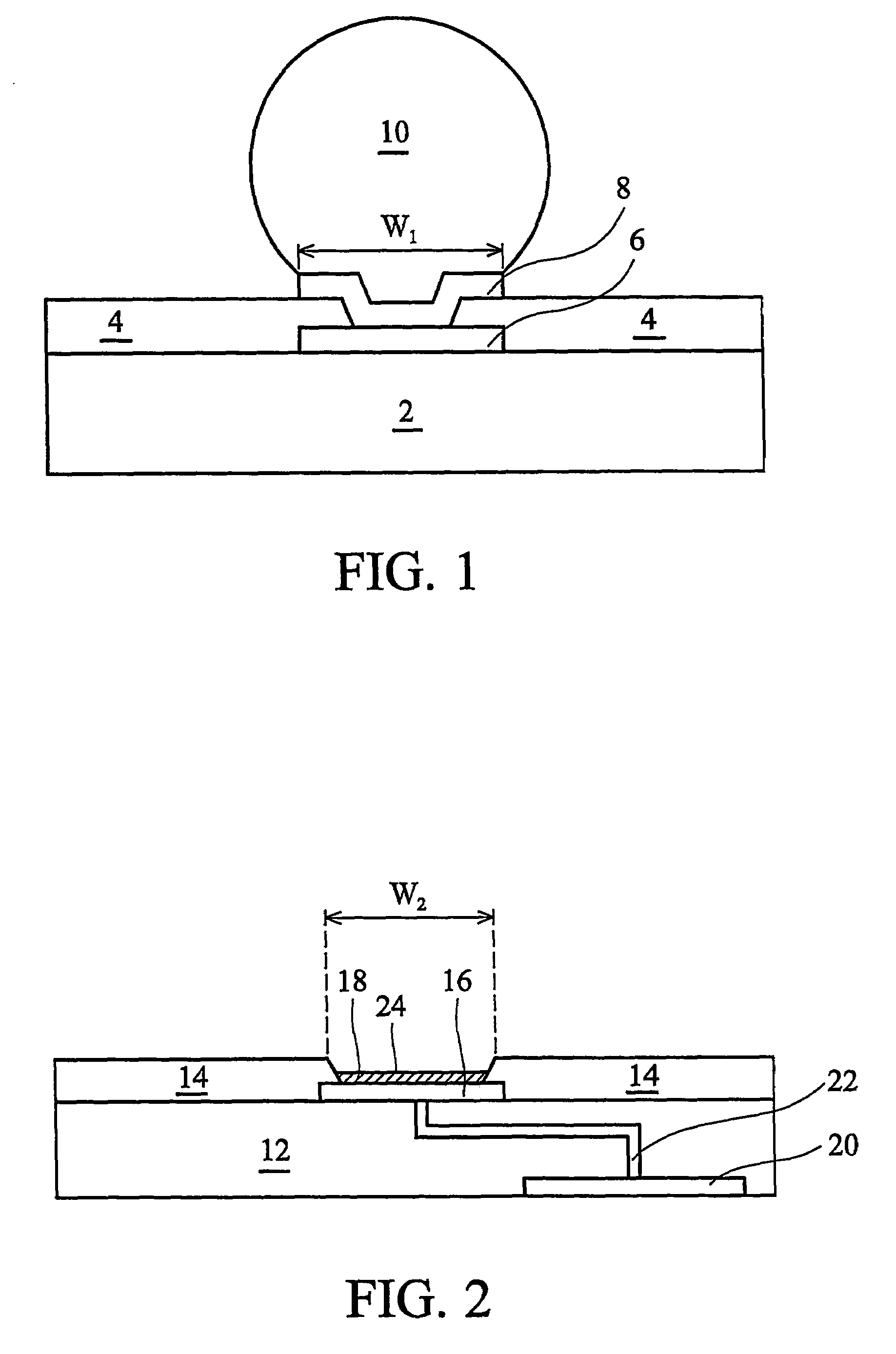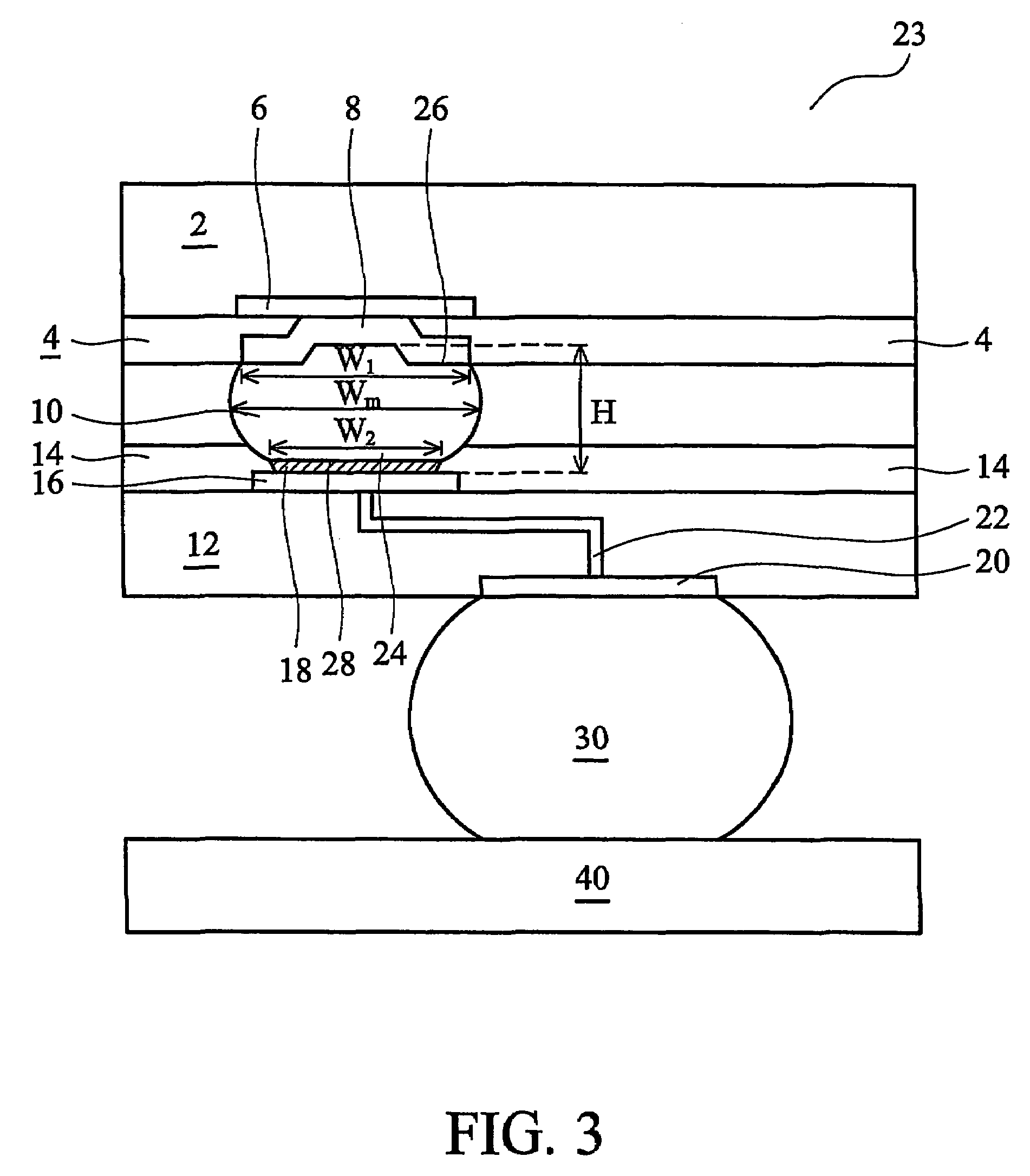Reducing cracking of high-lead or lead-free bumps by matching sizes of contact pads and bump pads
a technology of contact pads and bump pads, which is applied in the direction of basic electric elements, electrical apparatus construction details, solid-state devices, etc., can solve the problems of high-speed off-chip interconnection, toxic materials, and excessive brittleness of inter-metallic components, so as to reduce stress, improve the reliability of the resulting assembly, and the effect of extra effor
- Summary
- Abstract
- Description
- Claims
- Application Information
AI Technical Summary
Benefits of technology
Problems solved by technology
Method used
Image
Examples
Embodiment Construction
[0017]The making and using of the presently preferred embodiments are discussed in detail below. It should be appreciated, however, that the present invention provides many applicable inventive concepts that can be embodied in a wide variety of specific contexts. The specific embodiments discussed are merely illustrative of specific ways to make and use the invention, and do not limit the scope of the invention.
[0018]The preferred embodiment of the present invention presents a package assembly structure that uses lead-free or high-lead-containing bumps. The preferred embodiments are illustrated in FIGS. 1 through 4 wherein like reference numbers are used to designate like elements throughout the various views and illustrative embodiments of the present invention.
[0019]In the preferred embodiment, solder bumps are formed on chips, which contain integrated circuits. In other embodiments, the solder bumps are formed on package substrates. FIG. 1 illustrates a semiconductor substrate 2 ...
PUM
 Login to View More
Login to View More Abstract
Description
Claims
Application Information
 Login to View More
Login to View More - R&D
- Intellectual Property
- Life Sciences
- Materials
- Tech Scout
- Unparalleled Data Quality
- Higher Quality Content
- 60% Fewer Hallucinations
Browse by: Latest US Patents, China's latest patents, Technical Efficacy Thesaurus, Application Domain, Technology Topic, Popular Technical Reports.
© 2025 PatSnap. All rights reserved.Legal|Privacy policy|Modern Slavery Act Transparency Statement|Sitemap|About US| Contact US: help@patsnap.com



